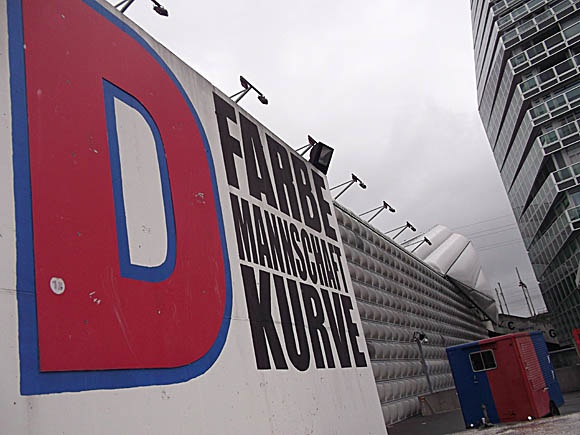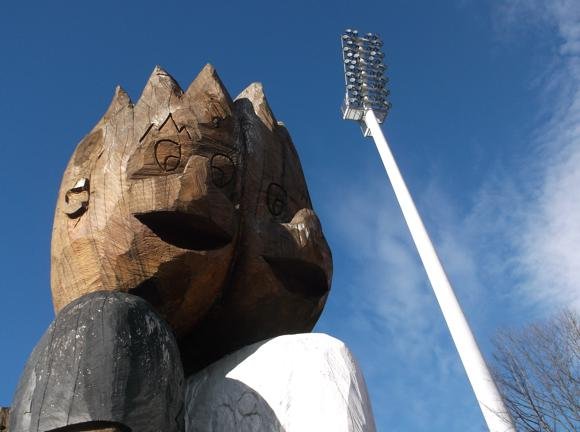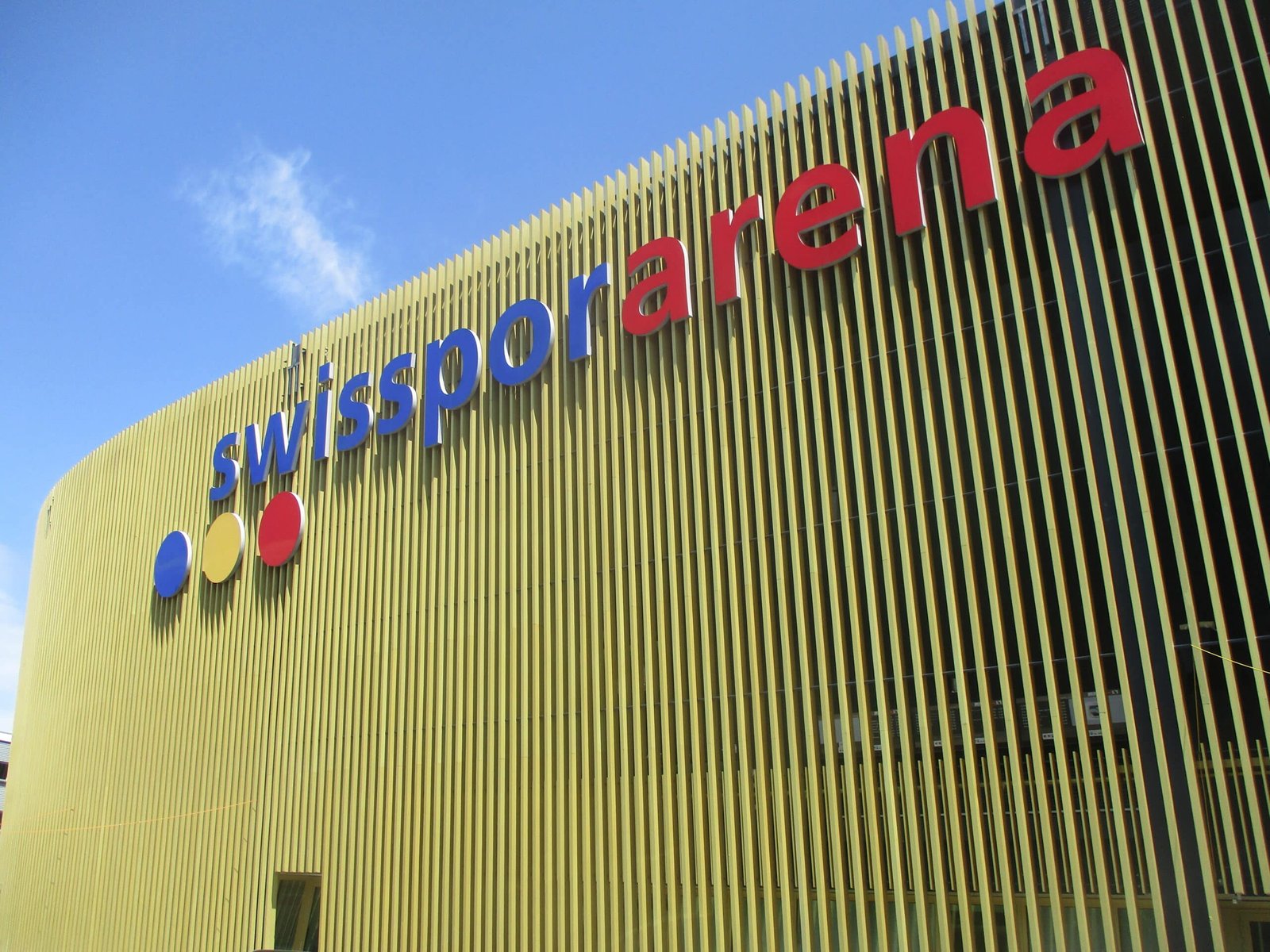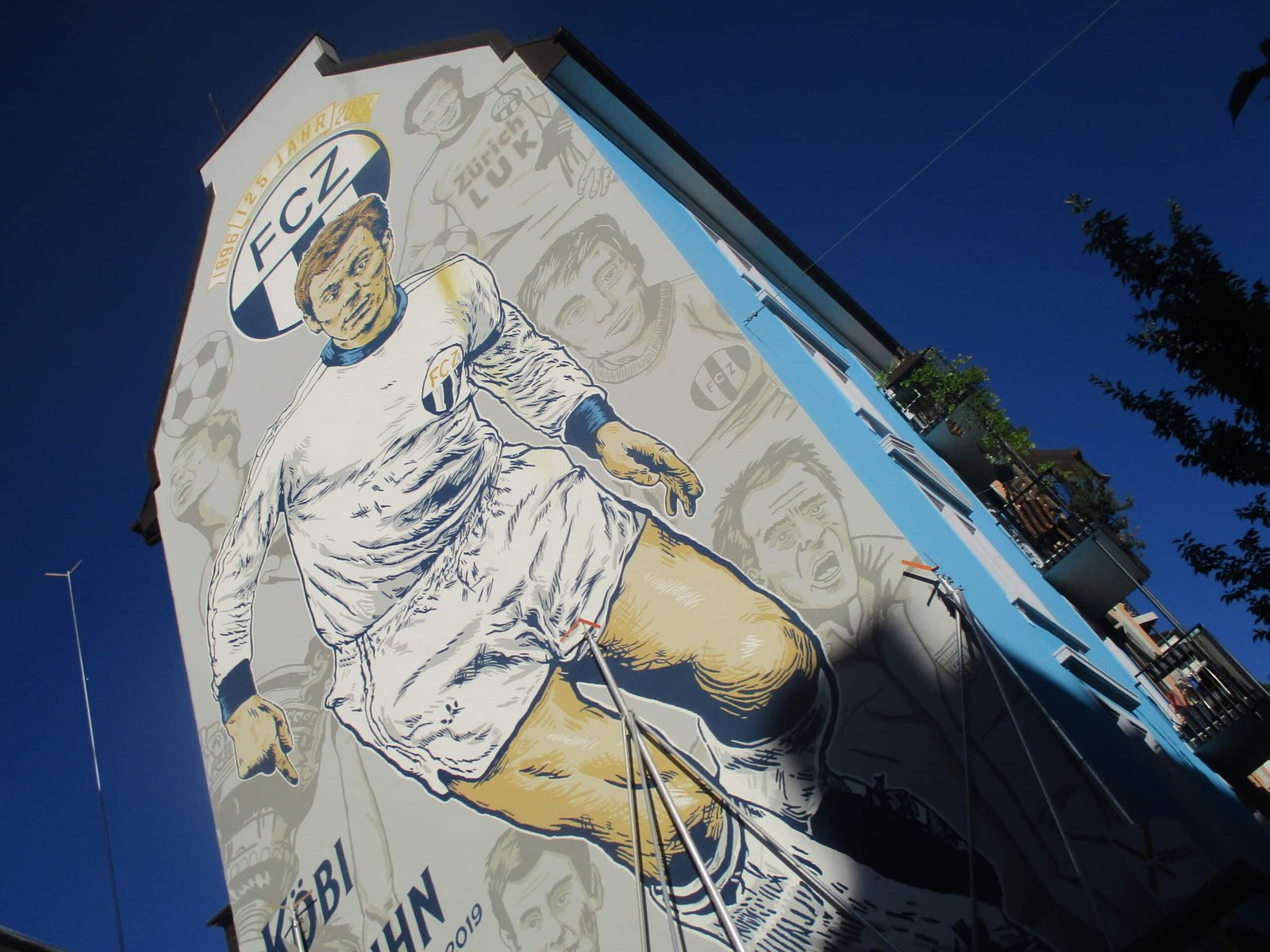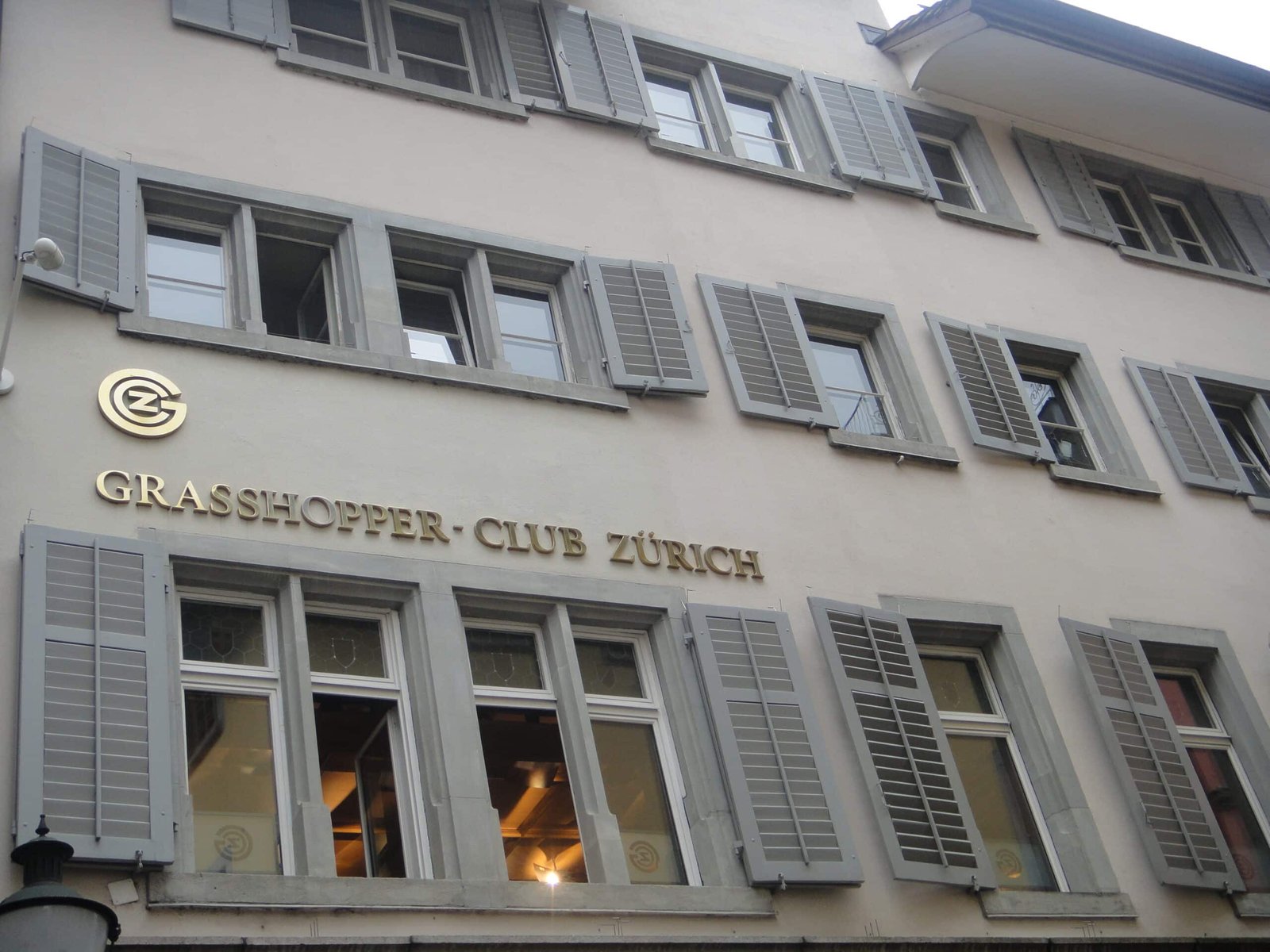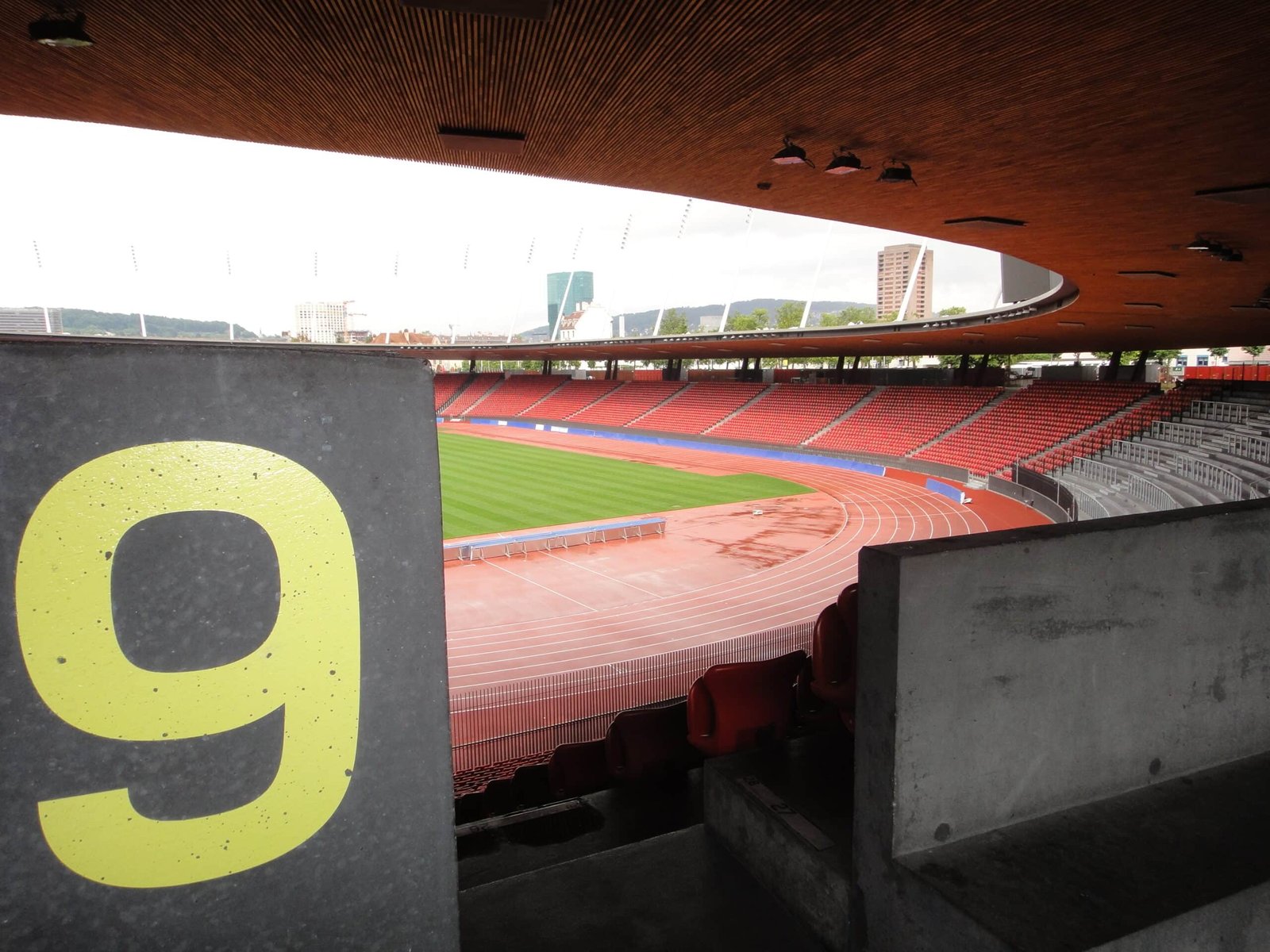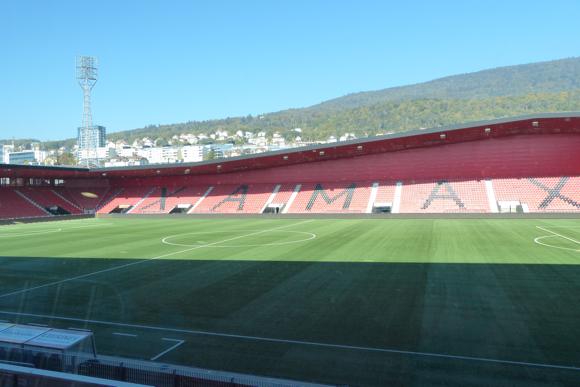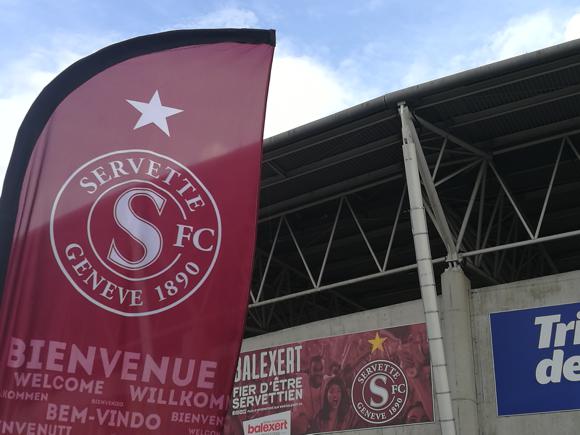A fan’s guide – the club from early doors to today
Since promotion to the top flight in 2002, FC Thun have qualified for Europe four times, played Arsenal and Ajax in the Champions League and gained a new stadium.
Currently, though, this little club overshadowed by nearby Berne is treading water, surviving in the Swiss Super League but without the clout to challenge the big boys.
Thun had a brief purple patch in the mid-1950s, the main high point between the club’s foundation in 1898 and the modern day.

Founded by enthusiasts at the Gasthof Zum Sternen where Marktgasse meets Schwäbisstraße, FC Thun climbed from the Central Swiss League to the 2.Liga in 1933, then 2.Liga to the third-tier 1.Liga with the league restructure of 1944.
Two years later, they reached the Nationalliga B, alongside the likes of FC Zürich and St Gallen. Over 12 months from the spring of 1954, FC Thun gained promotion to the top-flight Nationalliga A, opened a new ground, the Stadion Lachen, and made a losing appearance in the Swiss Cup final of 1955. A 3-1 defeat to La Chaux-de-Fonds, the double winners three goals up on 20 minutes, coincided with relegation after one brief season with the big boys.
Set in a sports complex beside Lake Thun, panoramically backdropped by the Alps, the Lachen was one of the most serene grounds in Nationalliga B, where Thun settled for 15 years until 1970.
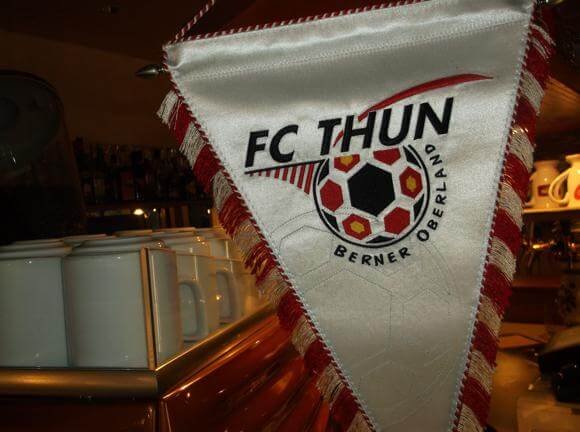
Relegation preceded nearly 30 years of lower-league anonymity, until the arrival of former Swiss international defender Andy Egli as coach in 1995. Gaining promotion to the Nationalliga B in 1997 after a 27-year absence, Thun welcomed the arrival of Milaim Rama, a Swiss-Albanian striker whose goals would take them to the top flight in 2002. It was his solitary strike before half-time that beat Winterthur in the promotional play-off.
Former Thun goalkeeper Hanspeter Latour remained in place as coach as Thun performed creditably in the Nationalliga A, Rama earning the first of seven Swiss caps.
In 2004, Thun qualified for the Inter-Toto Cup, taking on Wolfsburg and Hamburg SV. A year later, it was the Champions League, goals from Ticino figurehead Mauro Lustrinelli earning Latour’s team a runners-up spot in the Nationalliga A, a full ten points ahead of Grasshoppers.
The Zürich club duly signed Latour, leaving Thun to face a Champions League debut with inexperienced Ürs Schönenberger as coach.

Based at the newly reopened Stade de Suisse in Berne, Thun first overcame Dynamo Kyiv thanks to a late goal from Tiago Bernadini. The Brazilian centre-back then struck again, a further brace from Lustrinelli sinking Malmö 3-0 and taking Thun into the group stage.
Thun began by almost taking a point from Arsenal at Highbury, a red card for van Persie on half-time Nelson Ferreira’s equaliser for the visitors keeping the score at 1-1 until a Dennis Bergkamp strike in stoppage time. Thun then beat Sparta Prague, twice lost to Ajax, before another red card influenced the return game with Arsenal. Down to ten men following Armand Deumi’s dismissal on 35 minutes, Thun still held The Gunners at 0-0 until a late Robert Pirès penalty sealed victory for the eventual finalists.
Despite such heroics, Thun qualifying for the UEFA Cup, the club surprisingly sacked Schönenberger on the eve of a narrow defeat to Hamburg.

There were also problems nearer to home. The Swiss League had warned Thun that the Lachen did not match requirements for top-level domestic football. Unable to persuade the electorate to fund a new stadium from public funds, the club faced demotion until agreement with a contracting company saw the construction of the Arena Thun, on the western outskirts of town by the A6 motorway.
Meanwhile, the return of Milaim Rama could not prevent relegation in 2008. Still playing at the Lachen, Thun hired former Swiss international centre-back Murat Yakin as coach to lead them back to the Super League. With attacking midfielder Ezequiel Scarione in prolific form, Thun won the Challenge League in 2010 and within one season were back in Europe.
Now housed at the newly opened Arena Thun, the hosts began their Europa League campaign against Vilaznia Shköder. Trailing the Albanians by an away goal, Thun struck back in the dying minutes with goals from substitutes Milaim Rama and Benjamin Lüthi. After a narrow win over Palermo, Thun were then swept aside by Stoke in the play-off round.

Thun had better luck two years later. With a midfield of later Swiss cap Luca Zuffi, and Schneuwly brothers Marco and Christian, the Bernese Oberland side spanked Partizan Belgrade 3-0 but disappointed in the subsequent Europa League group stage.
With stadium sponsorship money from Alpine cable-car company Stockhorn, Thun made a further Europa League appearance two years later, falling in the play-off round 6-4 to Sparta Prague on aggregate.
Hero of the team of 2005, Mauro Lustrinelli stepped in as interim coach in the spring of 2017 to lift the side out of the relegation zone. His replacement, former team-mate Marc Schneider is now tasked with bringing back those glory years.
Stadium Guide
The field of dreams – and the stands around it



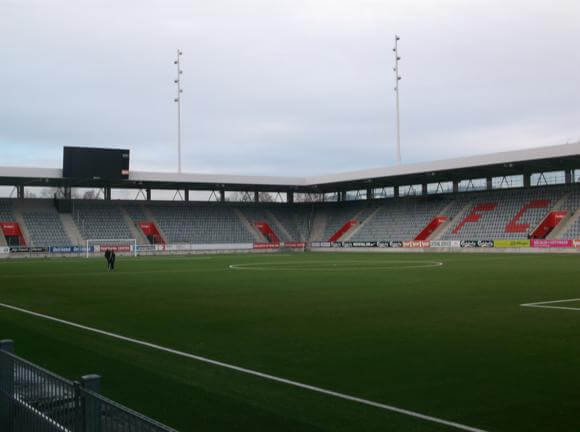

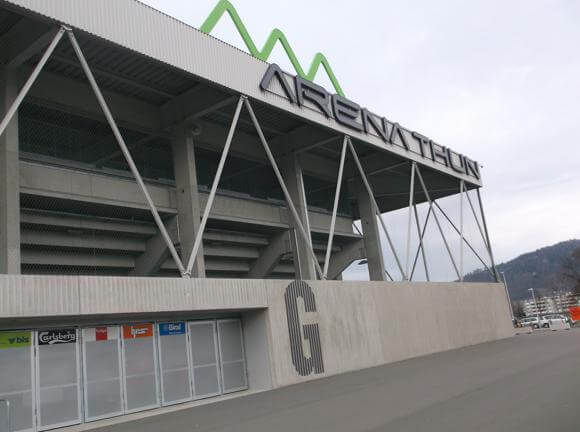
The Stockhorn, formerly Thun, Arena, bears all the hallmarks of a new-build: artificial turf, out-of-town location, retail park alongside, motorway nearby, little else in the vicinity. Opened in 2011, renamed in 2014, the Stockhorn Arena holds 10,000, of which 2,000 are standing places in the Heimsektor, the home end of the Südtribüne.
Away fans are allocated sectors D9 and D10 in the Nordtribüne.
The best, and priciest, seats are over the halfway line in E13/F14 in the Osttribüne and B4/A3 in the Westtribüne, but in such a small, intimate stadium, you’re close to the action wherever you are.
It’s all-covered but those in the front rows may get dripped if the rain is blowing in.
getting there
Going to the stadium – tips and timings
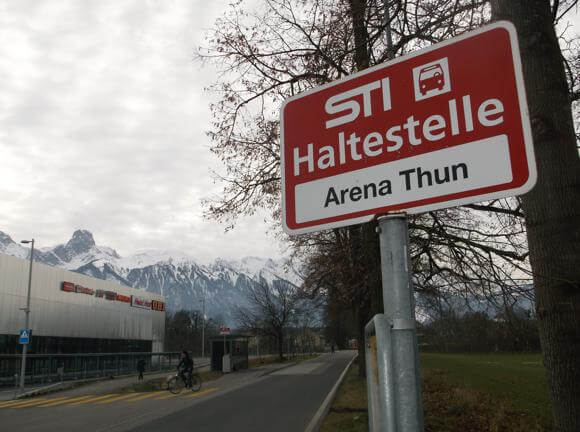
Arena Thun has its own bus stop on line 3. Buses leave every 10mins (every 30mins eve, every 15mins Sun) from Kante 2 outside Thun station, taking 7mins to cover the six stops there.
To walk from Thun station would take a good 20 minutes, from the city centre another 10-15 minutes.
To reach the Stadion Lachen and its FC Thun supporters’ bar, take equally regular bus 1 from the station to Strandbad, journey time 5mins.
getting in
Buying tickets – when, where, how and how much
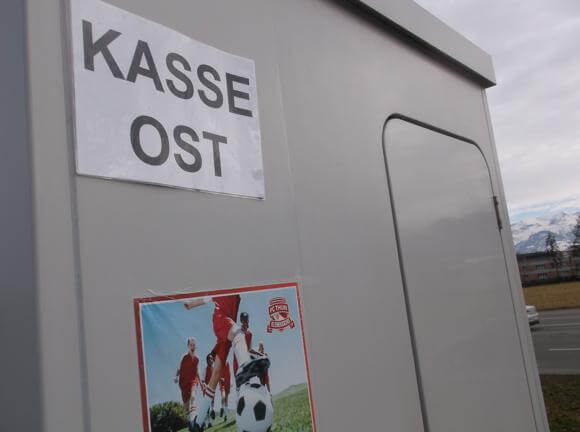
Availability is rarely a problem. Even the biggest game, against Young Boys Berne, hardly ever sells out.
The club sells tickets on a quarterly basis, ie up to six home games in advance. Advance sales in person are through Ochsner Sport (Mon-Fri 9am-8pm, Sat 8am-5pm) in the Panorama Center next to the stadium and Sport XX (Mon-Fri 8am-5pm, Sat 7.30am-5pm), slightly closer to town in the Zentrum Oberland retail centre at Talackerstraße 62, by the junction with Weststraße. Scores of branches of TicketCorner across Switzerland also distribute.
The club offers an online print-at-home service.


For information, the ticket office at the stadium operates Mon-Fri 8am-noon, 1.30pm-5pm and 1hr 45min before kick-off, contact +41 33 225 1898, ticketing@fcthun.ch.
The Tageskassen kiosks outside the ground open on match days only.
To stand with the home fans costs SF26, SF13 for 6-15s. The cheapest seats are Kategorie 3, in three corners of the stadium and behind the goal in the Nordtribüne, SF32, SF16 for 6-15s. For the visits of YB Berne and Basel, it’s SF40/SF20. Kategorie 2, better seats around the corners, are SF44/SF22, SF52/SF26 for YB Berne and Basel.
The priciest seats are SF64/SF32, SF72/SF36 for YB Berne and Basel. Visiting supporters pay SF25, SF20 reduced. Under-6s are admitted free.
what to buy
Shirts, kits, merchandise and gifts

The FC Thun shop (Mon-Fri 8am-noon, 1.30pm-5pm, match days) is by Eingang A at the stadium.
Replica tops are currently a whopping SF99, either first-choice red-and-white or away lime-turning-to-bottle-green. A retro shirt, with a string collar and a bright yellow starburst across a white band against a background of red, might be a better bet.
For evening games, you may certainly need the old-style FC Thun bobble hat. The beautifully knitted winter scarves also feature the yellow sunburst logo on red-and-white bars.
Where to Drink
Pre-match beers for fans and casual visitors
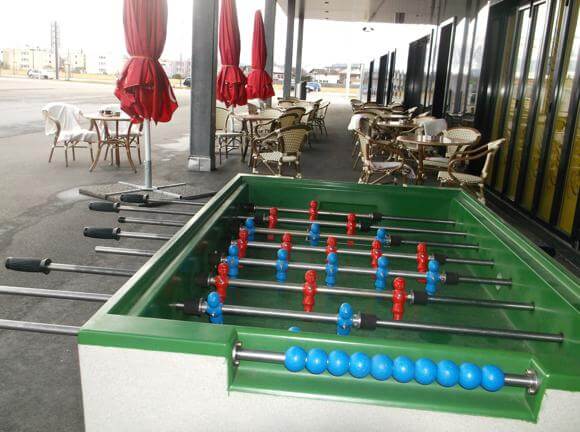

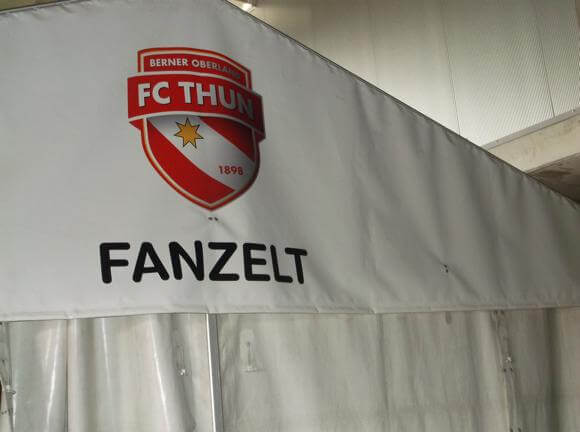
The only bars near the stadium are the two cafés at street level at the Panorama Centre opposite: the Cappuccino Club, with its table football table outside, and Migros, attached to the supermarket of the same name. Both have terraces, the Cappuccino Club sells beer.
Under the main stand on match days, the FanZelt is a beer-dispensing marquee, with sausages (Kalbbratwurst) at SF6.50. Depending on the opposition, the beer might be alcohol-free Carlsberg.
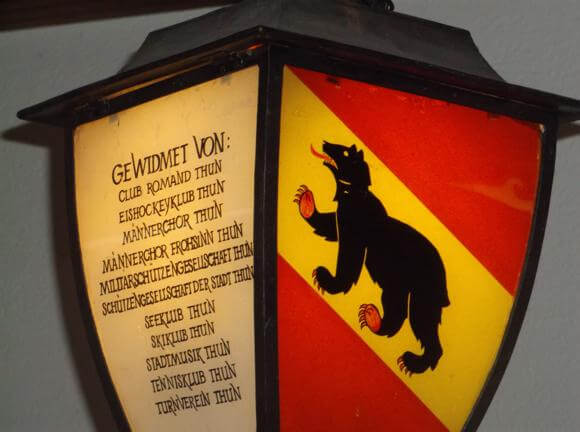

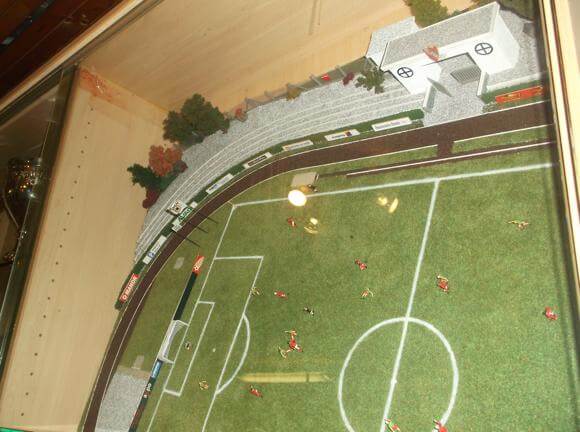

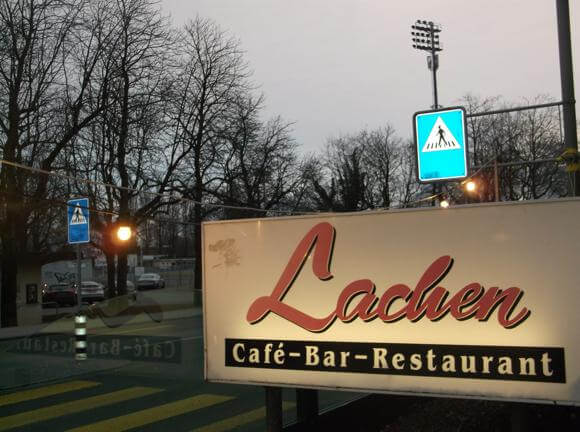
The best FC Thun drinking spots are to be found at the old Stadion Lachen on Gwattstraße. The supporters’ bar is decorated with vintage pennants, autographed posters from the 2005 Champions League campaign, a scale model of the ground in its heyday and a little pile of illustrated club histories. It should be open and serving beer most evenings.
Across the street, the Restaurant Lachen is another age-old Thun haunt with pennants to prove it. Beer, and SF20-SF30 main dishes, can be served outside on the terrace.


